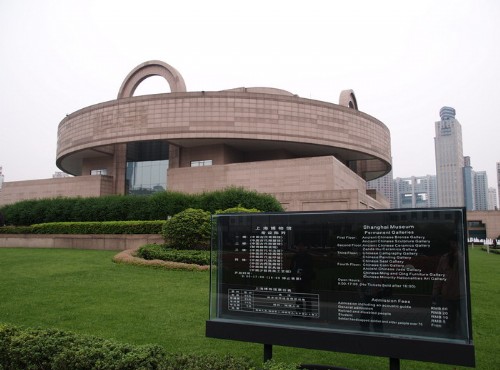With a collection of over 120,000 pieces, the Shanghai Museum displays some of the best cultural relics from China’s Neolithic period to the Qing dynasty, a span of over 5,000 years. While the highlights are the bronze ware, ceramics, calligraphy, and the painting, it also has excellent displays of jade, furniture, coins, and Chinese seals or “chops.” The museum was established in 1952, and the current building opened in 1995 with a design that recalls some of the exhibits and symbolizes “a round heaven and a square earth.”
The calligraphy and painting exhibits are changed frequently for their own protection in the gallery guide. As well as the permanent collections, the museum often holds displays from other major museums around the world. You will see the Shang bronzes of Jia (wine vessel), a burial gift from the mid-15th-13th century BC, shows great skill and craftsmanship in its sophisticated animal mask design. While walking for a while, the Sancai pottery figures are just at your side. The major technical advance of the Tang dynasty (618-907) in ceramics was the development of sancai (three-color) pottery. This grave figure is a superb piece of polychrome pottery.
The celadon wares are simple beauty and strength made it highly desirable. This example of Longquan Ware from the southern Song dynasty (1127-1279) elegantly captures the movement of the coiled dragon. Zande Lou ceramics is a privately donated collection of 130 pieces and includes some outstanding Qing imperial items. Chinese landscape paintings owes a great deal to Daoist philosophy. Accordingly, Wang Meng’s (1308-85) picture Retreat in the Qingbian Mountain tries to capture the powerful and almost animate essence of nature. To the Chinese, calligraphy is more than mere communication; it is one of the big best art forms. This cursive script was painted by Huai Su (AD737) in typically wild movements that combine delicate and forceful strokes.
Liangtuxuan is a privately donated collection of paintings and calligraphy. The Seal gallery displays examples of virtuoso carving and calligraphy and Jade Gallery sculpture in jade, the quintessential Chinese stone, reached its peak in the Qing dynasty (1644-1911) as exemplified by this exquisite jade Gu (wine vessel)
Benson W.
